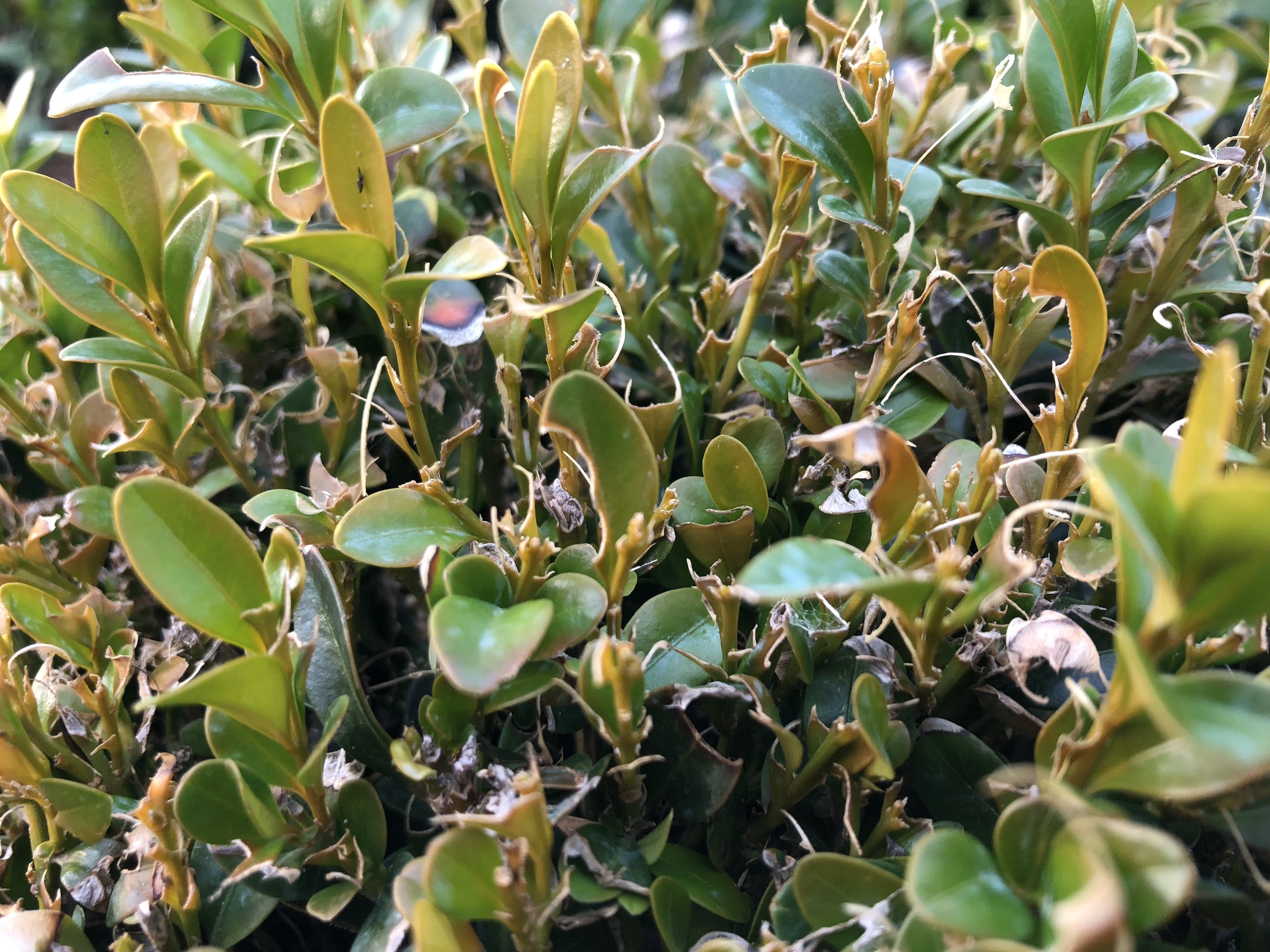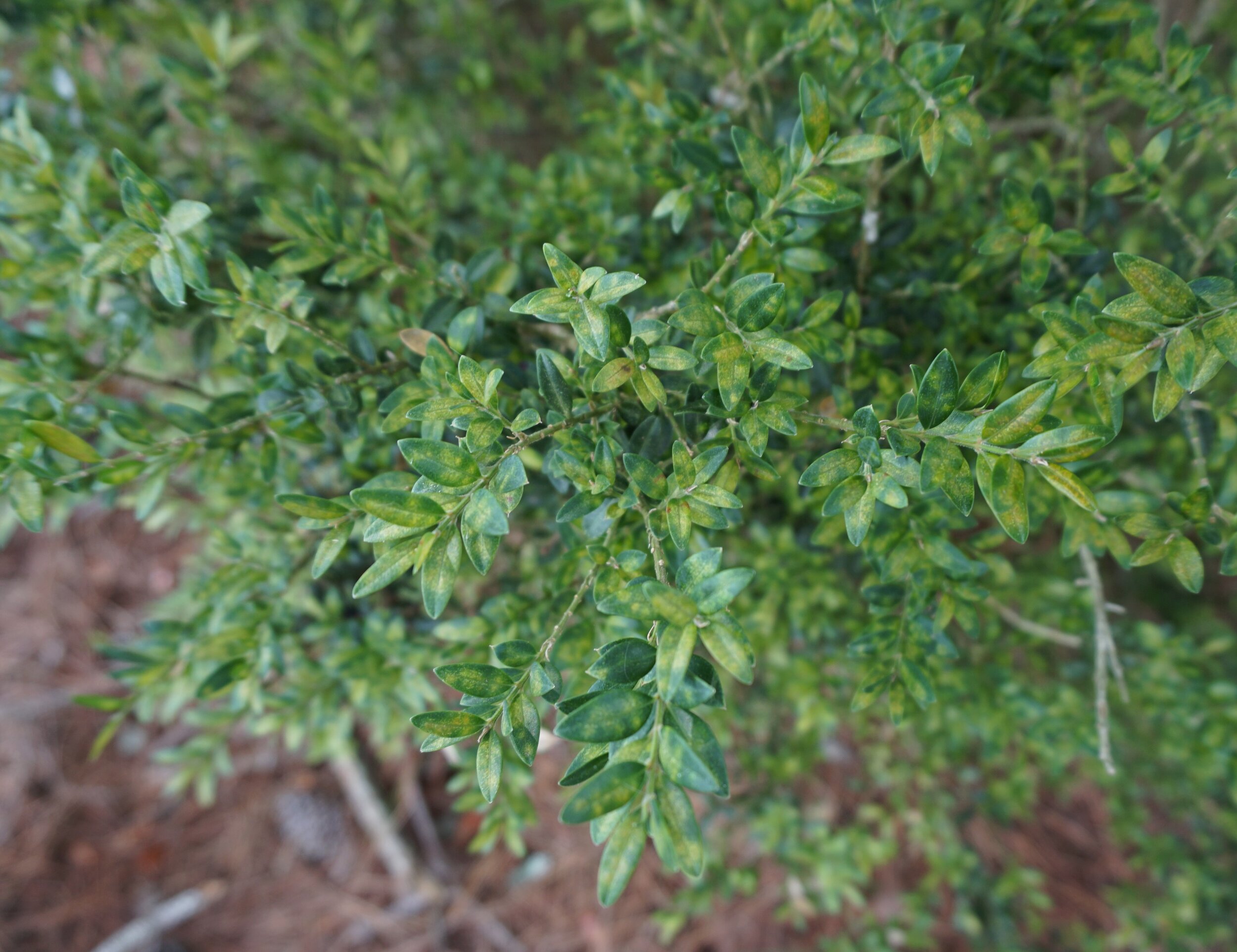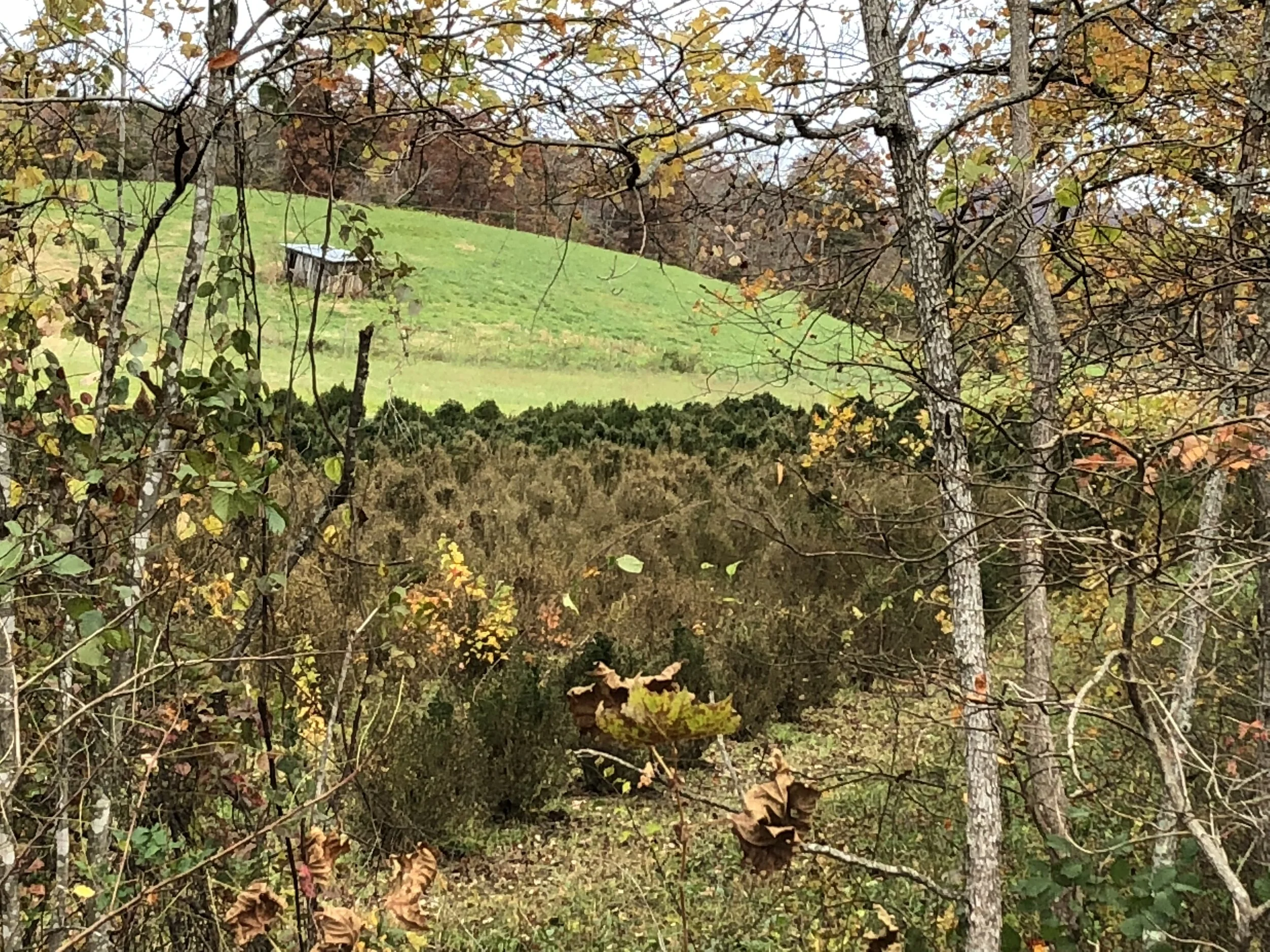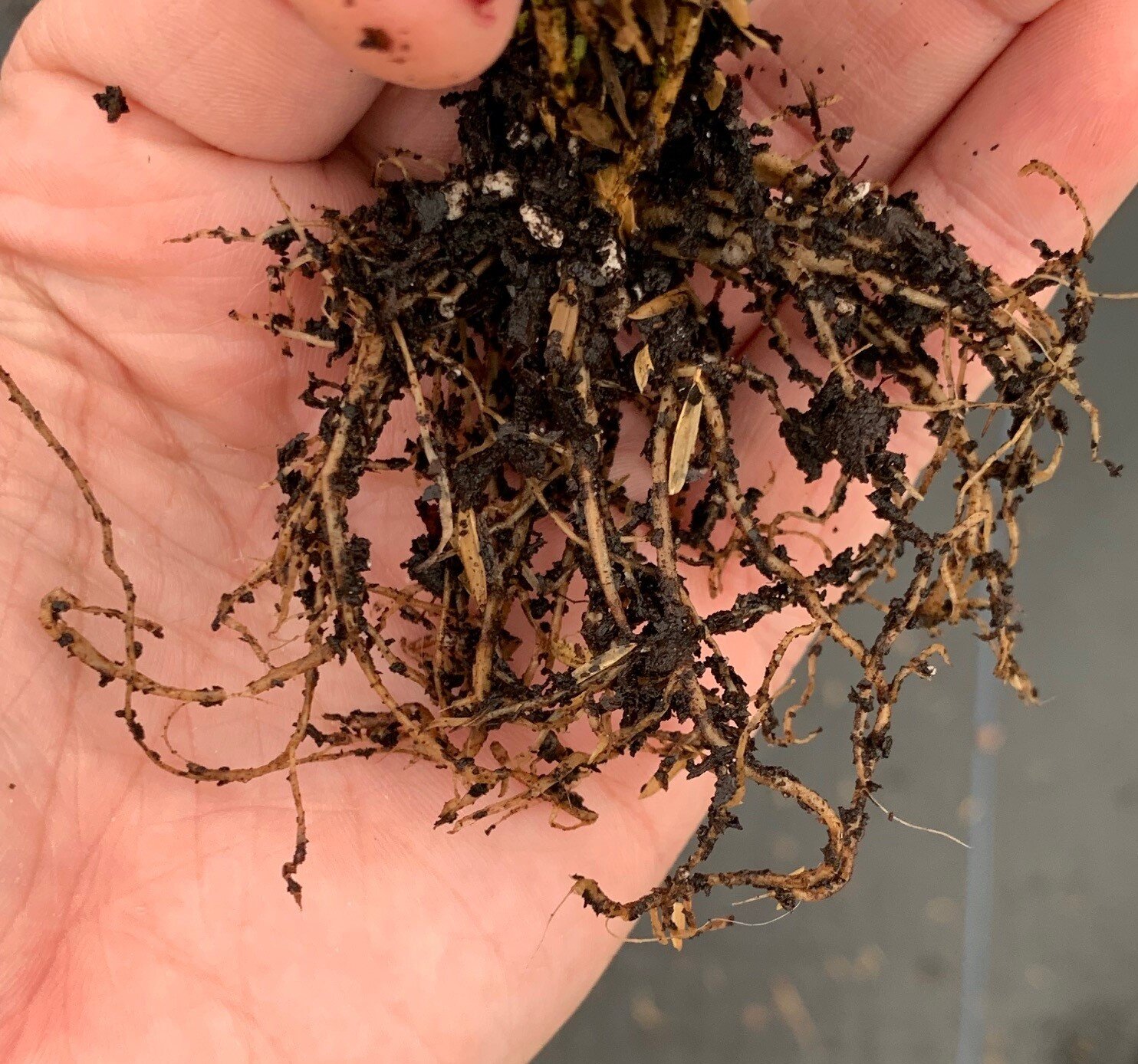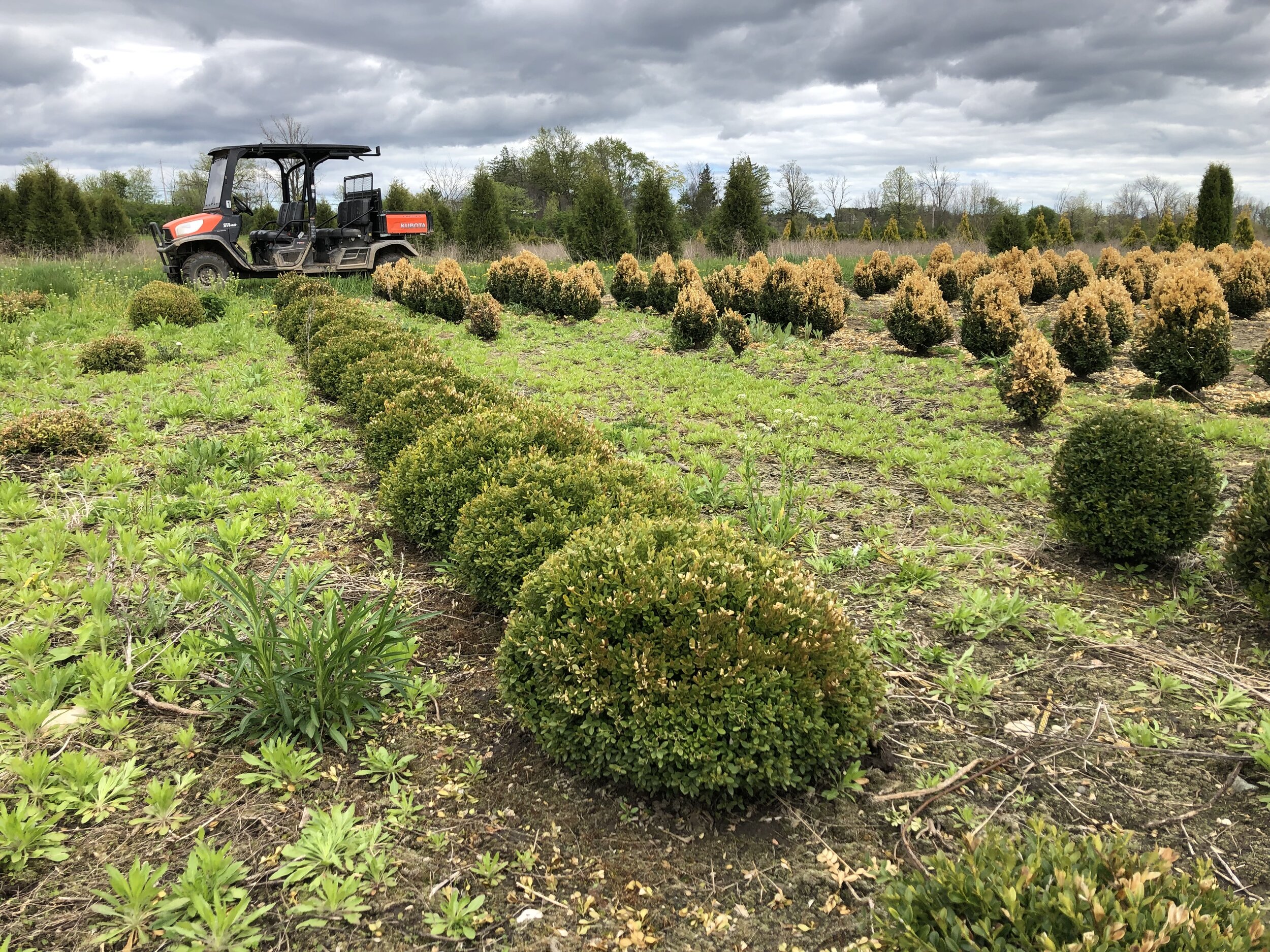Pests, Diseases and Problems
Although boxwood are known for having few pests and disease problems, there are some issues you could come across. This page highlights the most common problems affecting boxwood, and the proper way to identify and treat them.
Scroll down for tips on identifying each pest, disease or problem or click the images below for detailed information.
Boxwood Leafminer
One of the most common insect pests for boxwood, especially in the Mid-Atlantic region of the United States is Boxwood Leafminer. This small mosquito-like insect completes its life cycle once per year, emerging in the early spring to mate and lay eggs. This pest is easy to treat with a single, properly timed, insecticide application, or can be prevented by selecting cultivars of boxwood that are genetically resistant. Saunders Genetics has spent many years researching, and learning about this pest. Click the images for more details.
Boxwood Blight
Boxwood Blight is a fungal disease that was first found in the United States in 2011 and is likely the most severe boxwood disease. After 15 years in Europe, this disease was first found in North Carolina. Boxwood Blight can be diagnosed by its distinctly round leaf spots, dark stem lesions, and rapid defoliation, particularly after periods of heavy rainfall and prolonged wetness. The heavy, sticky spores of this disease spread as water splashes from plant to plant, or are carried on debris and tools. Because of the nature of this disease, there are many biological, chemical, and cultural practices that can help prevent the infection and spread of the disease. Click the images for more details.
Phytophthora Root Rot
Phytophthora Root Rot is a soil borne, fungal pathogen that affects the roots of the plant. It is a relatively common disease that affects many different plant species. The pathogen can exist in the soil, but does not become active until proper conditions arise. Prolonged periods of wetness, or soil that is saturated with water on a regular basis cause the symptoms to appear. Cultural practices like planting boxwood higher in the soil or even in raised beds provide better drainage and minimize chances of infection from this disease. Symptoms appear as sections of the boxwood turning off color and leaves feeling dry. The leaves then begin to curl and brown, but do not defoliate from the plant. Stems will also appear to collapse and appear dark and off color. If you cut into the cambium layer of the stem you will find the innermost layer to be dark and rotten. The roots of the plants will also turn brown and brittle and the outer layer of the root hair will slough off easily when pulled. Examples of healthy and unhealthy roots are in the images below. There are some chemical control option but the best way to combat this disease is to minimize over-watering and facilitate proper drainage. Click the images for more details.
Boxwood Decline
Boxwood Decline is a bit different than the other pests and diseases that affect boxwood. This issue effects only Buxus sempervirens ‘Suffruticosa’ (English Boxwood) and it is less clear what the cause is. Some believe that it is a single disease and others believe it is most likely the result of multiple stressers, weakening the plant and eventually resulting in death. This problem kills boxwood slowly, starting as a discoloration of foliage, progressing in die-back and eventually killing the plant. This may take months starting on a single branch or section of the plants, and over time it spreads to the entire plant. This should not be confused with Boxwood Blight, which can cause severe damage in a matter of days or weeks.
Stresses that can cause this problem to arise include; losing or removing a large tree that has shaded a plant for many years and is now in full sun, heavy snow causing damage to the branches, severe drought or excessive water, poor soil pH or lack of nutrients, old age, lack of mulch to regulate soil temperatures, or even soil nematodes. Once a plant is stressed, then multiple factors may only worsen the problem. Unfortunately there is nothing to cure the disease, so the focus is to prevent stress that may cause the disease. Focus of proper soil pH between 6.5-7.0 and supply supplemental water in times of drought. If Boxwood Decline decimates a plant, do not replant with another English Boxwood. Look for cultivars such as Buxus microphylla ‘Winter Gem,’ Buxus microphylla ‘Green Beauty,’ or other Buxus microphylla species. NewGen Independence® and NewGen Freedom® are also great replacements for sites that have been effected by Boxwood Decline. Click the images for more details.
Frost or Freeze Damage
The terminology frost or freeze damage is used to describe the damage from abnormally low temperatures either in the Fall or Spring. In the mid-Atlantic area of the United States, the damage from these weather events occurs in the fall during October through early November, and in the spring during late March through early May. The resulting damage is a “burning” of the most tender foliage of the plant, usually the tips of the newest growth of the boxwood. The damage occurs when the temperature gets below 30 degrees Fahrenheit, with the worst damage occurring when the temperatures get into the low to mid 20’s.
In the fall, the extent of the damage is related to the temperatures leading up to the cold temperatures, with the worst damage occurring with a very warm fall followed quickly by a severe and early frost or freeze.
In the Spring, the extent of the damage is related to the development of the new growth in the boxwood, with the worst damage occurring with a very early and warm spring, fully pushing out the new growth of the boxwood, followed by an abnormal cold spring night.
Cold Injury
The damage from mid-winter cold weather often has some of the same characteristics as frost or freeze damage, but also has some different features. Mid-Winter cold injury is characterized by a more general bronzing or browning of the boxwood, with the worst damage on the southwestern side of the boxwood. Cold injury can oftentimes cause the bark on the boxwood to split, and in extreme cases will kill the entire plant. Cold injury, like frost and freeze damage, is most severe if the plant has not had ample time to fully harden off.
Pets & Odor
Dog and cat urine will kill boxwood branches. Buxus sempervirens cultivars tend to be the favorite targets.
Some boxwood cultivars exhibit a very strong odor in early summer when the sun shines directly on them, especially when the humidity is high. Buxus sempervirens ‘Suffruticosa’ or English Boxwood is the most aromatic. Many people believe this might be what attracts pets. The preferences varies, but some gardeners relish the aroma of boxwood and others have likened the smell to that of cat urine. Fortunately for some and unfortunately for others, this is the odor of boxwood and it is more intense with some cultivars than others and cannot be controlled. If the odor or aroma of boxwood is not your favorite, then shy away from Buxus sempervirens cultivars. Buxus microphylla and insularis cultivars will be less odorous.





